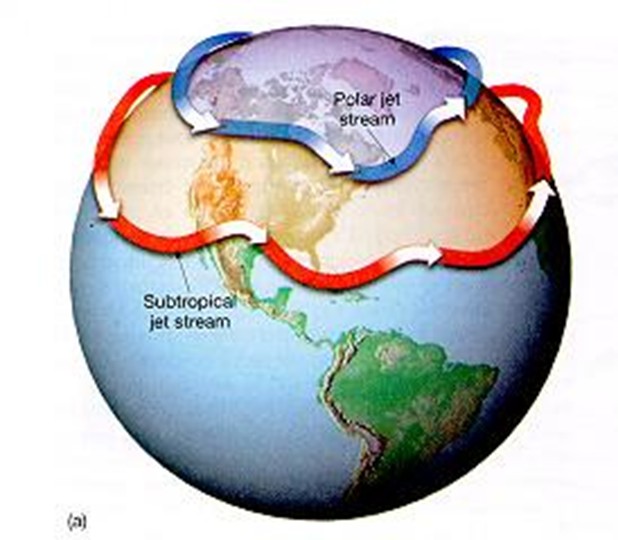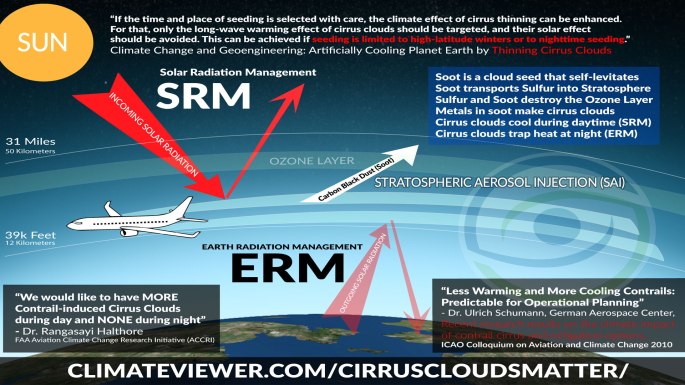Things to Know First:
Did you know that clouds are not just the water vapors in our atmosphere? Yes, it’s true. Because if they were, then one would not be able to see them. The water in the clouds is either in liquid or ice form depending what’s the cloud height. Air that surrounds the globe contains water vapor and it’s only when they condense into water droplets or solid ice crystals that visible clouds form in the sky. But firstly for condensation to begin, the vapors need a surface where they can condensate and grow to a larger size, these surfaces, or the nuclei for condensation, are called Cloud Condensation Nuclei(CCN).
CCNs can be broadly classified into two categories viz. Natural like the sea salt and dust aerosols and Anthropogenic (Man-Made) Aerosols like Black carbon due to burning fossil fuels. These CCNs or Aerosols have different properties based on their chemistry. Aerosols like the Black carbon are absorbing in nature i.e. they trap the incoming shortwave solar radiation and the outgoing long-wave radiations thereby inducing a heating effect and on the other hand aerosols like the sulfate aerosols reflect the radiations inducing a cooling effect for the region.
Cirrus clouds are the thin wispy clouds present at the high altitudes(>6000metres). These clouds are mainly ice crystals. Cirrus clouds are formed by Soot, sulfur, metal nanoparticles, water vapor, and static electricity to make things stick. Carbon Black Dust (CBD) and Carbon Black Aerosol (CBA), also know as soot is coated in sulfur and shoots out of the rear of an airplane engine. Water sticks to these sulfur-coated soot particles and clouds form. Soot is a cloud condensation nucleus (CCN) and sulfur increases the likelihood of cloud formation.
At high altitudes where the majority of the intercontinental planes fly (around 36,000ft), the outside temperatures are as low as minus 56 degrees Celsius. The water vapor condenses on the soot particles from the jet exhausts and if the temperatures are cold enough they turn into ice and form contrails. This can happen at lower altitudes as well if the atmosphere is moist enough along with a low-temperature value. These artificially formed contrails or cirrus clouds are known as Cirrus aviaticus and can last from a few seconds to several hours.
THE PROBLEM:

Now some of the soot particulates which are wrapped up in ice and sulfur travel along the high altitudes by the Earth’s jet streams and get to locations thousands of kilometers away from their origin. So away from the airports where the low altitude flights occur, areas which have the highest air traffic like in the US and Europe actually have quite low levels of aviation based pollution because most of it is transported westwards to places like India and Asia where it falls down on earth and inhaled by the population there. It’s not only the humans which are affected, but the environment is also affected, but it’s not quite as clear-cut as it would first seem. The contrails themselves are ice and that reflects the sunlight during the daytime but acts as an insulator to keep the earth warm at night. Soot particles absorb heat and warm up the atmosphere while the sulfate particles reflect light and heat cooling the place. The NOx or Nitrogen oxide produced and released at high altitudes is very effective in creating ozone which adds up to the warming effect but it also reduces the levels of methane, a very potent greenhouse gas which has about 20 times the warming effect of CO2. the sulfur in the exhaust can combine to form sulfuric acid which depletes ozone but can also form acid rain to damage life on the Earth’s surface. So as one can see, this is a very complicated picture.
THE SOLUTION:
Now talking about how to solve the complicated problem one needs to tools like Climate Engineering or Geoengineering that can be defined as intentionally modifying the climate in order to temporarily offset or reduce increasing surface temperatures by global warming. With the help of geoengineering, we cannot stop Climate Change but we can surely decelerate the rate of warming.
According to a 2013 congressional report:
The term ‘geoengineering’ describes this array of technologies that aim, through large-scale and deliberate modifications of the Earth’s energy balance, to reduce temperatures and counteract anthropogenic climate change. Most of these technologies are at the conceptual and research stages, and their effectiveness at reducing global temperatures has yet to be proven. Moreover, very few studies have been published that document the cost, environmental effects, socio-political impacts, and legal implications of geoengineering. If geoengineering technologies were to be deployed, they are expected to have the potential to cause significant transboundary effects.
In general, geoengineering technologies are categorized as either a carbon dioxide removal (CDR) method or a solar radiation management (SRM) method. CDR methods address the warming effects of greenhouse gases by removing carbon dioxide (CO2) from the atmosphere. CDR methods include ocean fertilization, and carbon capture and sequestration. SRM methods address climate change by increasing the reflectivity of the Earth’s atmosphere or surface.
Aerosol injection and space-based reflectors are examples of SRM methods. SRM methods do not remove greenhouse gases from the atmosphere, but can be deployed faster with relatively immediate global cooling results compared to CDR methods.
The climate engineering focused on this article is Cirrus Cloud Thinning and can be categorized as a form of Thermal Radiation Management(TRM). The idea is to deplete the high and cold cirrus clouds to enable more thermal radiation to escape the Earth’s atmosphere. Cirrus clouds reflect some incoming solar radiation, but this albedo cooling is smaller than the cirrus’ greenhouse effect. Cirrus cloud thinning could be done by seeding cirrus forming regions with highly effective ice nuclei to initiate heterogeneous freezing [Mitchell and Finnegan, 2009]. It is thought that cirrus clouds are mainly formed by homogeneous freezing [Karcher and Lohmann, 2003], though recently it has been found by aircraft measurements over North America that heterogeneous freezing
could be playing an important role in cirrus cloud formation [Cziczo et al., 2013]. By introducing efficient ice nuclei, one can alter the competition between homogeneous and
heterogeneous freezing. Seeding the clouds facilitates the formation of larger ice crystals
with higher terminal velocities, eventually falling out of the cloud, thereby depleting it.
At temperatures colder than –40 ◦C, homogeneous freezing takes place at supersaturations higher than 50% with respect to ice. Heterogeneous freezing, on the other hand, requires a lower supersaturation and will, therefore, be favored if sufficient ice nuclei concentrations are present. Heterogeneous freezing can hence deplete the upper tropospheric water vapor before homogeneous freezing can take place.
The seeding material would have to be inefficient at warmer temperatures so as not to interfere with the rain-producing clouds. The method has to most effective at night-time, when the clouds’ albedo effect is zero and only the warming effect is existent. Bismuth tri-iodide, BiI3, can be used as suggested by Mitchell and Finnegan, 2009. It is relatively cheap (compared to silver iodide) and non-toxic, with efficient ice nucleating properties at temperatures colder than –20 ◦C [Mitchell and Finnegan, 2009].

Reducing the optical depth and lifetime of cirrus clouds, thus reducing the longwave
radiation trapping does not tackle the underlying issue of global warming: anthropogenic greenhouse gas emissions. It does, however, target the relevant part of the radiation budget (i.e. LW), as opposed to climate engineering options directed at the shortwave radiation, such as stratospheric sulfur injections and marine cloud brightening. So commercial flights can be used as carriers to seed cirrus clouds by using two fuel tanks: a biofuel during the take-off and a sulfur-rich one when they are at high altitude because the soot will carry the sulfur to the stratosphere (Stratospheric Sulfate Injection) thereby reducing the cirrus clouds’ thickness.
– Anish Mahanta ( )

